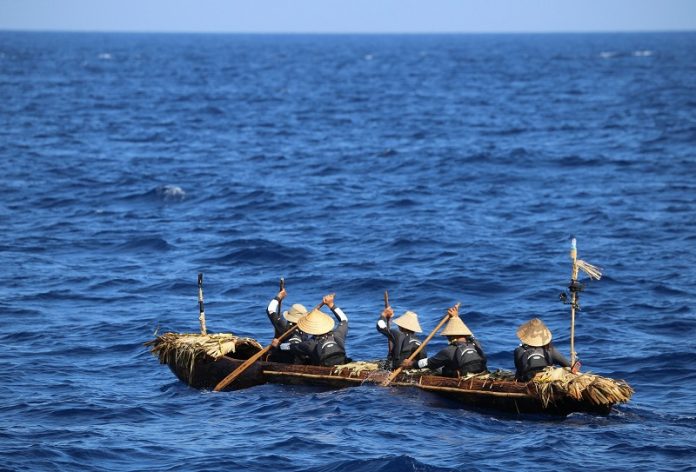
Thousands of years ago, people made long and risky journeys across the sea—without modern boats, maps, or even metal tools. But how did they do it?
A new study led by Professor Yousuke Kaifu from the University of Tokyo may finally give us some answers.
His team used both computer models and real-life experiments to test how ancient humans might have crossed the ocean from what is now Taiwan to the islands of southern Japan, like Okinawa.
Although we know early humans reached East Asia over 30,000 years ago, we still don’t fully understand how they managed to travel between islands, especially through rough seas.
The Kuroshio Current—one of the strongest and fastest ocean currents in the world—runs through this area.
Many believed it would have been impossible to cross without drifting off course. But Kaifu’s team wanted to test whether ancient people had the skills to do it.
The researchers used ancient-style stone tools to build a canoe just like the ones early humans might have used.
They carved a 7.5-meter-long dugout canoe, named Sugime, from a single Japanese cedar tree.
Then, in 2019, they paddled it more than 225 kilometers from eastern Taiwan to Yonaguni Island, near Okinawa.
The trip took over 45 hours, and they had no map, compass, or GPS—only the stars, sun, waves, and their instincts to guide them.
It was a difficult journey. Most of the time, the island they were aiming for wasn’t even visible. But they made it, showing that this kind of trip could have been done with Stone Age tools and know-how.
The team also ran hundreds of computer simulations to test different travel routes, launch points, and paddling strategies. These virtual voyages helped answer questions that a single canoe trip could not.
The simulations showed that launching from northern Taiwan was the best option. They also found that paddling slightly southeast, rather than heading straight for the target, helped balance the force of the Kuroshio Current.
This suggests that ancient people had impressive knowledge of how the sea worked—even without maps or science.
The researchers first thought that early humans might have used rafts, but earlier experiments proved rafts were too slow and fragile to survive the current. The dugout canoe, on the other hand, was fast, sturdy, and seaworthy—strong enough to handle the journey.
However, the researchers believe that those who made the trip thousands of years ago likely didn’t return.
Without maps or knowledge of the ocean’s flow, it would have been nearly impossible to come back. These ancient travelers were truly bold explorers who risked everything to reach new lands.
This project, like the famous Kon-Tiki voyage in 1947, is a type of “experimental archaeology.” It doesn’t rely just on digging up bones or tools but actually recreates ancient experiences.
In doing so, it shows just how clever, brave, and determined our ancestors were.
Source: University of Tokyo.



